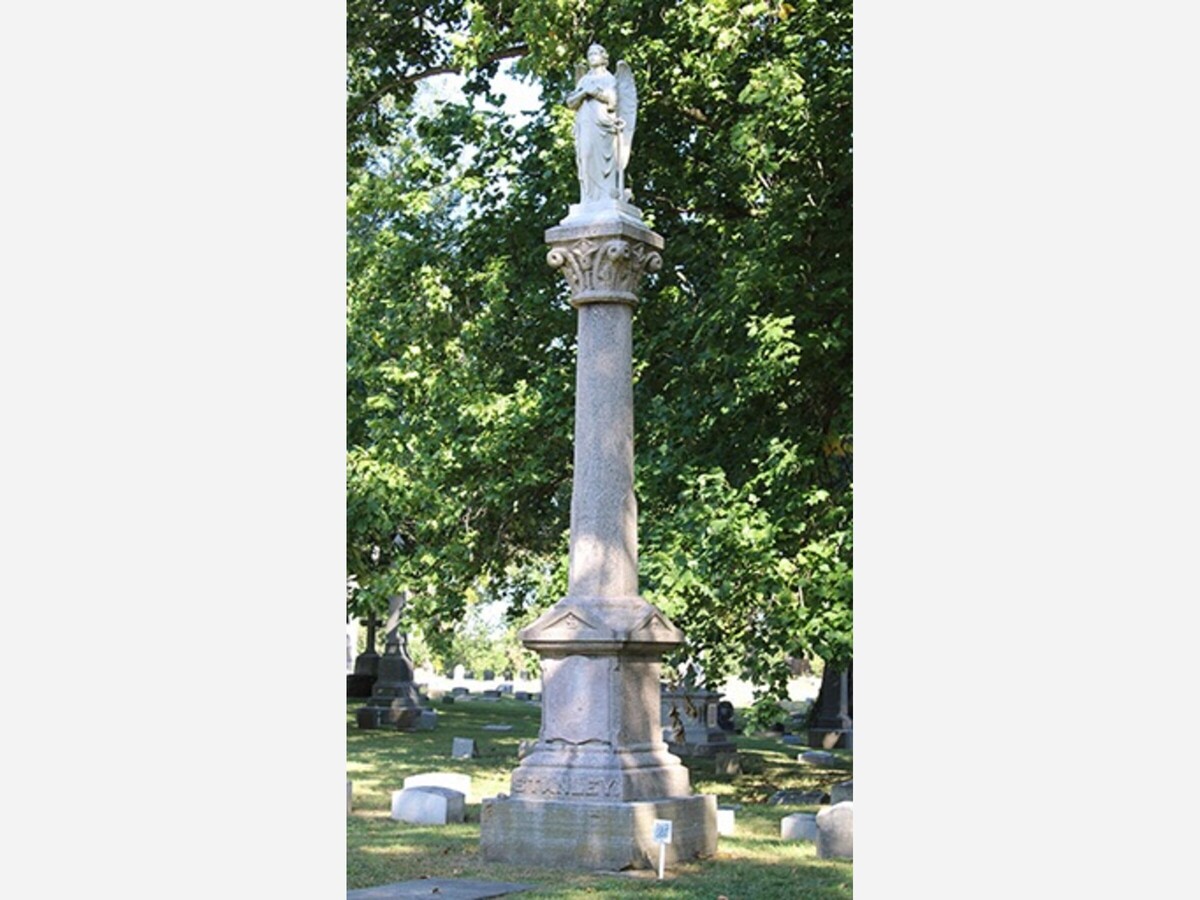Image

Courtesy of Misti Spillman, Manager, Preservation and Community Outreach Woodland Cemetery & Arboretum
Living here in Warren County, we are fortunate to be between the two larger cities of Dayton and Cincinnati. This allows us to not only share in both of these city's accomplishments, but in their residents. And, believe it or not, one way of learning about these people can often be found in historical cemeteries. Dayton, Ohio's Woodland Cemetery and Arboretum, which is one of the oldest garden cemeteries in the United States, is filled with history. And, this October, the WarrenCountyPost.com has been given the privilege to publish a piece from Woodland Cemetery and Arboretum about Matilda Stanely.
In the late summer of 1878, Dayton, Ohio, became the site of one of the most unusual and widely reported funerals in American history. Matilda Stanley, often called the “Gypsy Queen,” was laid to rest in Woodland Cemetery, drawing tens of thousands of mourners and onlookers.
Matilda Stanley was the matriarch of a prominent Romani family that traveled widely across the United States. She was born around 1821 and, along with her husband, Levi Stanley, was recognized by many within the Romani community as a leader. Known for her generosity, hospitality, and wisdom, Matilda gained respect both inside and outside her community. By the time of her death, she had become a figure of fascination to the broader public, who often romanticized or misunderstood Romani traditions.
On September 11, 1878, Matilda Stanley died in Vicksburg, Mississippi, at the age of fifty-seven. Her body was transported to Dayton, where her family often gathered. Woodland Cemetery, one of the city’s most prominent resting places, was chosen as her burial site. The Stanleys had previously buried relatives there, making it a place of family significance.
What followed was extraordinary. News spread quickly that the “Gypsy Queen” would be buried in Dayton, and thousands traveled from across the United States to attend. Contemporary accounts estimate that between 20,000 and 25,000 people came to the city. Not only Romani families, but also curious townspeople and visitors from surrounding states crowded the cemetery grounds. Special trains were reportedly scheduled to bring attendees into Dayton.
The funeral itself was elaborate. A local Methodist minister conducted the service, reflecting the Stanleys’ connections to Christianity as well as their Romani heritage. Floral arrangements and a grand procession accompanied the casket. Despite the size of the crowd, reports noted that the event was conducted with dignity and solemnity, leaving a lasting impression on those who witnessed it.
Matilda Stanley was interred in Woodland Cemetery, where her grave remains today. A simple but notable marker identifies her resting place. Over the years, her burial site has continued to attract visitors interested in both Romani history and the unique cultural tapestry of 19th-century America.
The funeral of Matilda “Gypsy Queen” Stanley remains one of the largest in Dayton’s history and a remarkable episode in the history of Woodland Cemetery. It highlighted both the significance of the Stanley family within the Romani community and the curiosity—and sometimes misconceptions—of the broader American public. More than a century later, her grave still stands as a reminder of the extraordinary life and legacy of a woman who held a unique place in her community and in American folklore.